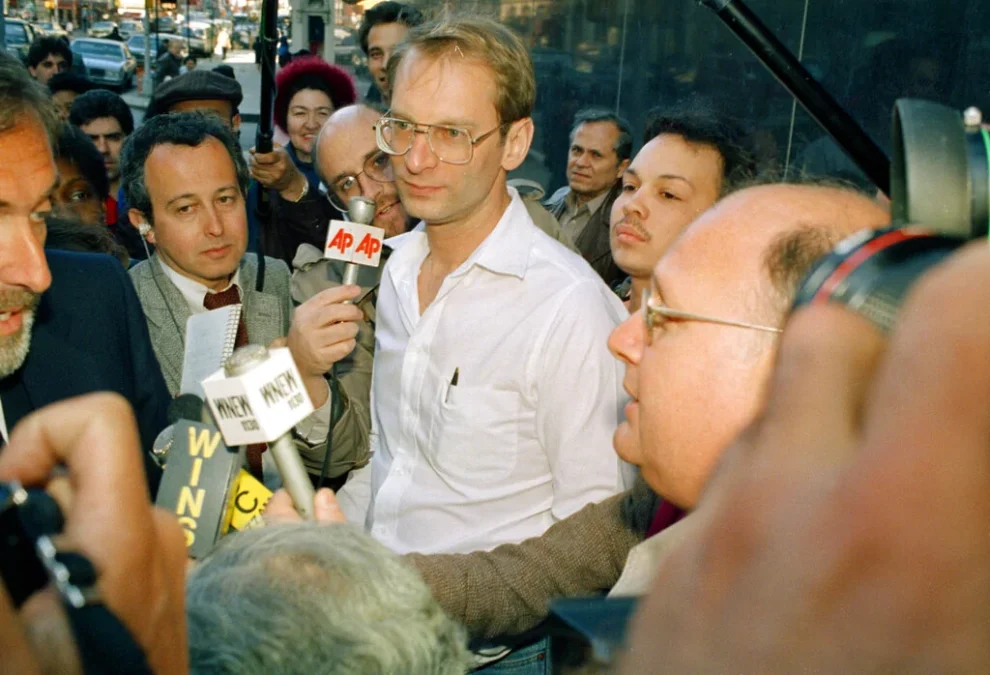Nearly 40 years before former Marine Daniel Penny captured headlines for the death of Jordan Neely, another case brought questions of crime and self-defense to the forefront of the national dialogue.
On Dec. 22, 1984, four black teenagers approached electronics specialist Bernhard Goetz, 37, on the New York City subway. After one of them said, “Give me five dollars,” Goetz pulled out a five-shot revolver and opened fire, injuring all four. Of these, one suffered a severed spinal cord, paralyzing him.

Goetz fled the scene to Vermont but turned himself in shortly after. His trial and the media coverage of it would draw national headlines, sparking debates about crime and race.
By the 1980s, New York City had become a hub of crime — murders averaged roughly 2,000 a year. The subway system became a particular target, with an average of 38 crimes reported there per day, according to Famous Trials.
Goetz himself had previously been mugged on the subway, leading to his obtaining a firearm for self-defense.
The helplessness surrounding the skyrocketing crime rates led to an outpouring of sympathy for Goetz, who quickly became an icon of vigilantism.
Goetz’s legal team’s strategy was quite different from that of Penny’s. The former was much more aggressive, actively portraying the four teenagers who approached Goetz as predatory criminals. His lawyers referred to them throughout the trial as “savages,” “predators,” and “vultures.”
In one of the most dramatic moments in the trial, Goetz’s defense team hired four members of the Guardian Angels, a volunteer crime patrol group, to play the role of the assailants in a court reenactment of the shooting. The volunteers were noted for being much bigger and more muscular than the actual assailants.
In both Goetz and Penny’s case, their defense was that they were thrown into a panicked state by the situation. Goetz’s team particularly leaned into this angle. His defense argued that he feared he would be “beaten to a pulp,” the Washington Post reported at the time.
“The mind went off, the body went into automatic pilot,” attorney Barry Slotnick said, adding, “People who are traumatized should not be convicted on the basis of their traumatization.”
One key difference between the Penny and Goetz trials was the role of race. Though the prosecution and some civil rights advocates alleged subconscious racial bias in the Goetz trial, the trial made no mention of the race of either party. Polls at the time showed a large section of the black population taking Goetz’s side, at times a majority, believing his actions were justified.
This is in stark contrast to Penny’s case, where the prosecution actively sought to center the role of race in the incident. Assistant District Attorney Jillian Shartrand almost exclusively referred to Penny as “the white man,” causing his defense attorneys to file for a mistrial.
“There is no longer a way my client can get anything resembling a fair trial at this point,” Penny’s defense attorney, Thomas Kenniff, argued, saying that the rhetoric from the prosecution made his client sound like a “white vigilante.”
Goetz ultimately won his trial, with his only conviction being on the relatively minor third-degree criminal possession of a weapon charge.
Several analysts have noted the similarities between the Goetz and Penny cases, with Goetz himself even commenting on the trial.
“He killed Michael Jackson,” Goetz sarcastically told the New York Post when asked about the trial. “He got to pay.”
CLICK HERE TO READ MORE FROM THE WASHINGTON EXAMINER
“I think Michael Jackson, tattoos, piercings, and cocaine all suck equally,” he added when asked if he was a fan of the former singer or Neely’s work as an impersonator.
Goetz’s case further lives on through pop culture, serving as a central inspiration to the 2019 blockbuster Joker.
























